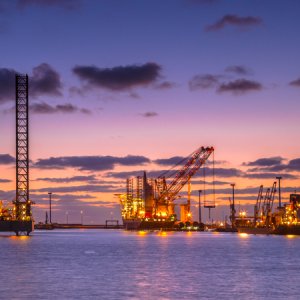Confidence in Mexico for National Funds

STORY INLINE POST
As the international oil and gas industry tracks prices and assesses the minutiae of its day-to-day fluctuations, investors are compelled by this current environment to take a long-term view when determining which specific markets and projects can provide the most competitive ROI. It is neither convenient nor exaggerated to contend that Mexico represents an attractive option in this regard when compared to similar choices in the international spectrum. There are a number of factors that come into play when determining its appeal, which are being carefully considered by dedicated providers of private equity and venture capital. Jaime Alatorre, in his capacity as Director of the Mexican Energy Fund created by Fondo de Fondos, is keen to provide his perspective on these factors and how they influence the fund’s current operations as they have evolved from its initial establishment in September 2014 as an investment vehicle of private equity focused in the Mexican energy sector with US$100 million in capital.
Alatorre claims there is the advantage of infrastructure transference in the Gulf of Mexico, and he is quick to elucidate on this geographical benefit, “The US side of the Gulf is filled with platforms and infrastructure, whereas in Mexico this infrastructure does not exist on the same scale. However, this also means that the players that enter the deepwater rounds will easily be able to transport equipment from one side of the Gulf to the other.” The Mexican Energy Fund does not operate within the financial scale necessary to aid oil majors in this type of operations. For this reason, Alatorre has in the past expressed reticence to comment on the fund’s possible involvement within the deepwater sector. Alatorre speculates that the creation of a dedicated fund for oil and gas service companies will eventually facilitate their involvement in the deepwater sector, as he summarizes, “With the creation of this fund, we will certainly participate in deepwater in Mexico. Our fund might not be large enough to work with the oil majors, so it is important to find companies of a size we can work with.”
A crucial second factor is timing, and the commitments that have been made surrounding the different phases of Round One involve projects with extended timetables that allow for production to begin at a future time when oil prices do not represent the investment hurdle that they currently do. Alatorre pins down these advantages, “The companies entering have three years to begin production, leaving some lead time to prepare the block, and allowing time for the price of oil to stabilize before extraction. I think the companies that participated in Round One and seasoned companies know that the amount they are paying is unrelated to the current price of oil, but is related to the strengths of the block in regards to geological information.” Alatorre’s positive outlook, rooted in a pragmatic familiarity with the energy market, even allows him to make some relatively specific predictions, “The price of oil is not a variable in this respect, because when the purchased blocks are ready for production, the price of oil will not be US$20 per barrel, but rather US$40-50 per barrel.” 323
Although the Mexican Energy Fund is looking forward to diversifying its portfolio within the sectors of the Mexican oil and gas industry, its involvement up to this point has been focused on pipeline development and power generation projects. Its experiences in this area prompt Alatorre to mention an example of a third factor that makes Mexico stand out: the new and unexpected opportunities created all along the energy value chain by the new post-reform legal regimes, such as the ones found in the aforementioned pipeline and gas supply projects. “With the awarding of these contracts comes the obligation to supply a certain amount of gas to a given site, but there is nothing to prohibit the increase of pressure on the pipelines, thus transporting more gas than required by CFE. As a result, this can create an opportunity to sell the surplus natural gas.” Alatorre further emphasizes the obvious attractiveness of these provisions by remarking that the contract allows the construction and funding of the line, as the return is solid, and profit can be made in developing independent markets through the surplus.
After evaluating these and other factors that make the fund’s confidence in the Mexican oil and gas industry unwavering, Alatorre concluded his remarks by explaining how Fondo de Fondo’s performance through the Mexican Energy Fund represents a strong basis for future growth. “One year ago, we were just starting out with the fund, with a commitment of US$100 million and an additional commitment of US$200 million. One year later, we have delivered on our commitments, and this year, we want to raise more money due to the robust pipeline and the opportunity to respond to new investments.”
























